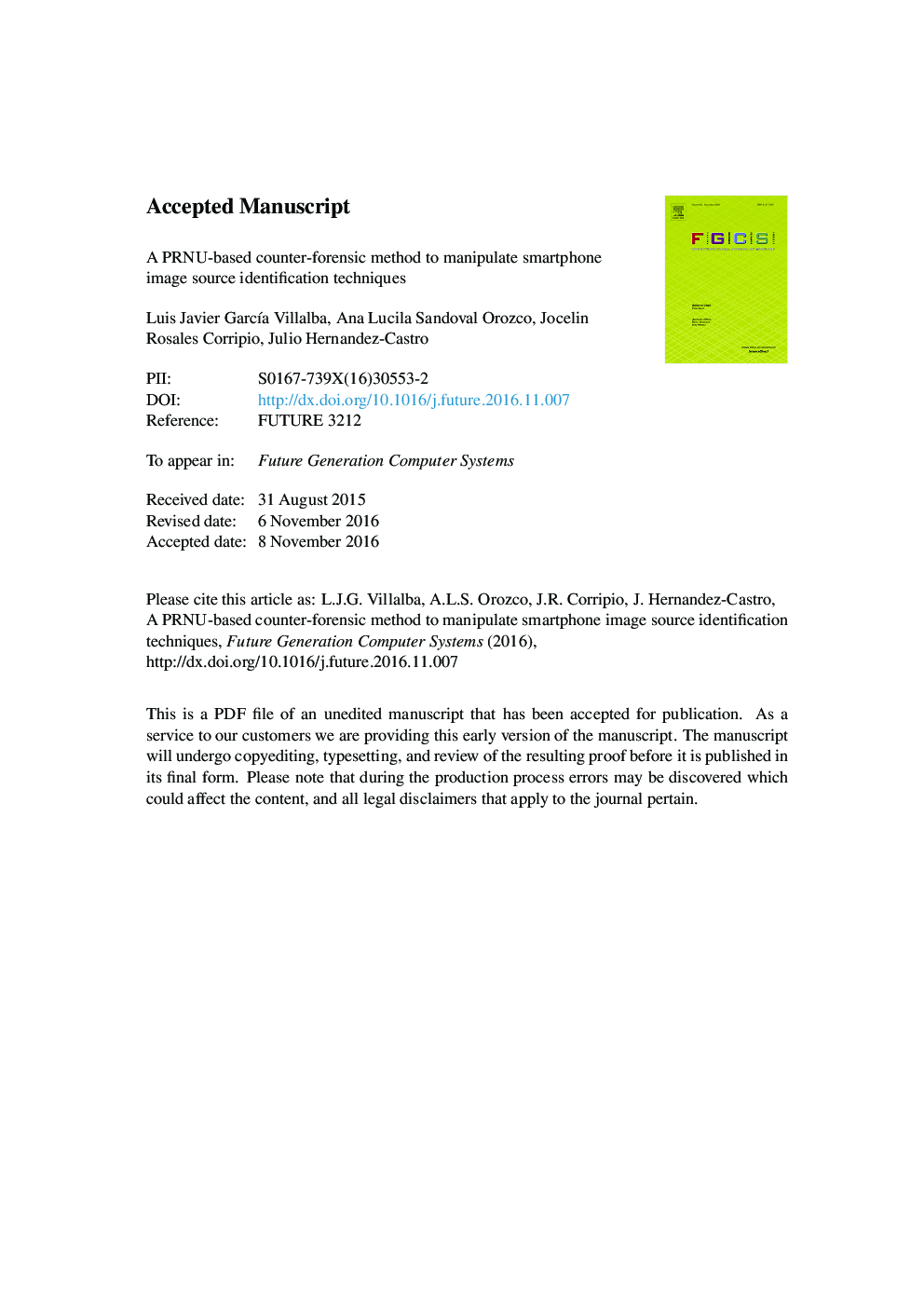| Article ID | Journal | Published Year | Pages | File Type |
|---|---|---|---|---|
| 4950331 | Future Generation Computer Systems | 2017 | 14 Pages |
Abstract
The increased diffusion of digital images generated by mobile devices through social networks, personal and professional communications, etc. is self-evident. This creates potential problems because some of these images may be used as supporting evidence for different criminal cases. In this paper, algorithms are proposed based on sensor noise and wavelet transforms which can alter the information which is usually employed to find the source of an image, and forge it so that it could point to a different, unrelated device. In the state of art we will show that there are already some algorithms capable of carrying out these manipulations, but they generally need much more and more complex data than our proposal. They also generally need physical access to the camera whose generated images you want to tamper. Our proposal algorithm to destruct the image identifiable data, only needs the picture which will be anonymized. Also, our proposal to forge the image identifiable data only needs a set of photos from the attacker camera, and the picture to be tampered. In particular, it does not need access to the camera that will be falsely linked to the picture. These scenarios are the most common and realistic. The algorithms proposed will help to strengthen existing techniques and develop new forensic approaches for mobile image source identification that will be more robust against attacks.
Keywords
Related Topics
Physical Sciences and Engineering
Computer Science
Computational Theory and Mathematics
Authors
Luis Javier GarcÃa Villalba, Ana Lucila Sandoval Orozco, Jocelin Rosales Corripio, Julio Hernandez-Castro,
